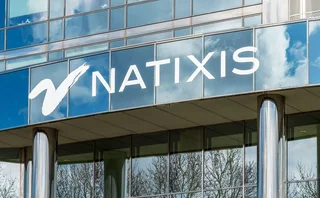
Market Data: Switzerland's soaring sales
In the past three years the number of products listed on the Swiss Stock Exchange has tripled. However, this only provides a snapshot of the real story, with the volume of OTC products dwarfing those on the exchange. Swiss market data provider Derivative Partners analyses the market's development

The Swiss structured products market is experiencing unprecedented growth in many aspects of the industry. There is impressive growth in sheer volume, number of players, product structure, underlyings and even in the infrastructure supporting the market. Of all these changes, perhaps the biggest structural change is the fact that products are now increasingly listed on the local exchange, the Swiss Stock Exchange (SWX).
The volume of exchange-traded structured products has risen threefold over the past three years. In all, approximately Sfr32 billion (approx EUR22 billion) is now placed in products listed on the SWX. The Securitized derivatives report produced by Derivative Partners counts nearly 10,000 listed products on the SWX at present. Over the past three years, the number of listed instruments has doubled, from 5,403 to 10,847 (see table 1)
The share of investment products has tripled over the same period. This indicates that the market is developing from a speculators' to an investors' market, and is a further sign that the market is sustainable over the long term.
There is also a change afoot in the underlyings sought by Swiss investors. Single stocks remain the preferred underlying, but although Swiss blue chips still make up the vast majority of them, there has been a move towards European and US large-cap stocks. However, the most obvious trend in underlyings is the emergence of commodities as a separate asset class.
As can be seen in table 3, commodities, rates and foreign exchange (FX) has gone from Sfr681 million to Sfr2,931 million in the past three years. Growth in this segment has been driven by investor demand for commodity linked products, which are far easier to trade on behalf of private clients then commodities futures contracts. Although rates and FX products play an important role in OTC transactions, they form only a small part of the exchange-traded market.
There is also an emerging trend in actively managed tracker certificates. Within this segment, strategies can be diverse and range from simple long to more active long-short approaches. This has emerged as Swiss investors - particularly private banking clients - seek outperformance, or alpha.
In terms of the major players listed on the exchange, Vontobel is the leading issuer with 35% market share (table 3). Impressively, Vontobel reported an 82% increase in the volume of structured products issued in the first half of this year compared with the same period in 2005. Vontobel specialises in leverage products and investment certificates. Zurcher Kantonalbank (ZKB) is the second-largest issuer on the exchange, followed by UBS and Goldman Sachs.
Over-the-counter opportunities
These figures only relate to the exchange-traded market in Switzerland; there is also a significant amount of structured business being done over the counter. However, the traditionally secretive nature of Swiss private banking makes it difficult to gauge the size of the OTC market.
According to a study undertaken by the Swiss National Bank, Sfr253 billion is currently invested in structured products. This represents slightly more than 5% of the total amount of investments in Swiss bank deposits. If these figures are to be believed, the OTC market would be more than seven times the size of the exchange-traded market, which makes it the largest market for structured products in the world.
What is known for certain is that the size far exceeds the exchange-traded market, due to the simple fact that the two largest banks in Switzerland, Credit Suisse and UBS, do not list the majority of their products on the exchange.
Both banks have huge retail networks and wealth and asset management operations in Switzerland, making them the leading players in structured products market. The market share as presented in table 3 shows that, for listed products, UBS has an 11% share and Credit Suisse a 3% share. The two banks have an extensive and wealthy client base, so they do not need to sell products to third parties because in-house placing offers at least the same margin at significantly lower costs.
Seeking transparency
Some concerns remain over the transparency of the OTC market in Switzerland, however. OTC products have problematic characteristics such as missing pricing transparency or unclear bid-ask spread definitions. With the major players unlikely to move completely to the exchanges in the near future, transparency is being sought through other means.
Transparency can be achieved by making product specifications and pricing mechanisms available to the public. In Switzerland, off-exchange transparency can be achieved through the Schweizerischer Verband fur strukturierte Produkte (SVSP) website, which lists all products available in Switzerland and offers a risk/return profile on each product.
By approaching transparency in this way, the transparency benefits of increased market exposure and increased liquidity can be achieved without the exchange trading cost. Making OTC products transparent for third parties may therefore be the most important market shift in the coming years.
There is also important ground being made in the efficiency of the Swiss Exchange with the merger of trading activities with German exchange Deutsche Borse. Together they will form a new exchange called Alex, which aims to be Europe's number one exchange for securitised derivatives. Alex will offer gains both in its singular focus on structured products and in its aggregated liquidity.
Growth rates indicate the future of structured products looks bright for Switzerland, while many of the major changes occurring in Switzerland will only fuel this growth further. With the maturing market, the rise of new underlyings, increased transparency in the OTC market and the arrival of Alex it would seem the foundations are being built for sustained growth in Switzerland.
Derivative Partners is a Zurich-based structured products consultancy and market data provider. It's founder and chief executive is Eric Wasescha. For more information visit www.derivativepartners.com
Only users who have a paid subscription or are part of a corporate subscription are able to print or copy content.
To access these options, along with all other subscription benefits, please contact info@risk.net or view our subscription options here: http://subscriptions.risk.net/subscribe
You are currently unable to print this content. Please contact info@risk.net to find out more.
You are currently unable to copy this content. Please contact info@risk.net to find out more.
Copyright Infopro Digital Limited. All rights reserved.
As outlined in our terms and conditions, https://www.infopro-digital.com/terms-and-conditions/subscriptions/ (point 2.4), printing is limited to a single copy.
If you would like to purchase additional rights please email info@risk.net
Copyright Infopro Digital Limited. All rights reserved.
You may share this content using our article tools. As outlined in our terms and conditions, https://www.infopro-digital.com/terms-and-conditions/subscriptions/ (clause 2.4), an Authorised User may only make one copy of the materials for their own personal use. You must also comply with the restrictions in clause 2.5.
If you would like to purchase additional rights please email info@risk.net
More on Foreign exchange
Intraday FX swaps could signal new dawn for liquidity management
Seedling market could help banks pre-fund payments in near-real time and reduce HQLA requirements
Natixis turns on the taps in flow trading
French bank boosts flow business, balancing structured solutions capabilities
Stemming the tide of rising FX settlement risk
As the trading of emerging markets currencies gathers pace and broader uncertainty sweeps across financial markets, CLS is exploring alternative services designed to mitigate settlement risk for the FX market
Power-reverse to the future: falling yen revs up PRDCs again
Pressure on Japanese unit sparks revival in power-reverse dual currency notes
Credit Suisse and Commerz latest banks to ditch hold times
Mizuho also confirms zero last look add-on but MUFG’s policy unclear on the controversial FX practice
Has Covid stopped the clocks on FX timestamp efforts?
Budget reallocation may not be the only factor stalling standardisation progress, say participants
EU benchmark drama set for cliffhanger end
Access to key FX rates due to be decided six months before potential cut-off
Banks rent ready-made algos for FX trading
NatWest, XTX Markets and others develop new outsourcing model for tech







